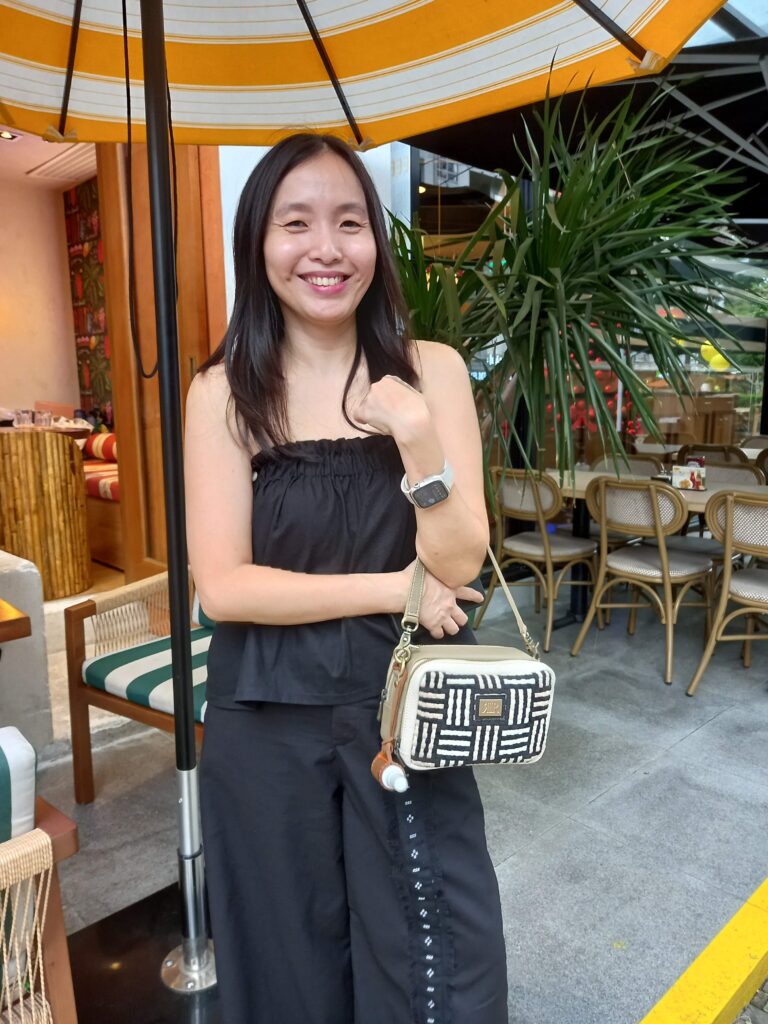Reese Fernandez-Ruiz has “completely evolved” since she started in 2007 the social enterprise Rags2Riches, or R2R, with eight co-founders.
“I was very young, straight out of college,” recalls the Ateneo graduate, major in Business Management, who’s now 38, married with two children and the company’s president. “I had very different ideas on how to operate a business that’s also sustainable and creates positive impact. So, I learned a lot through the years. I’ve learned how to collaborate more. I’ve learned how to be a better leader, how to engage more with our artisans.”
She goes on telling more to DAILY TRIBUNE in an interview, “When I was starting, actually hindi ako masyadong mahilig sa numbers dati, so ako, ‘O, ‘pag numbers, naku, ibang tao na lang (I wasn’t too interested in crunching numbers before, so I’d go, ‘Oh, if it’s about numbers, let somebody else do it’). But throughout the years and all the challenges in R2R, I learned to embrace the numbers behind business and really love the business side of it. Because that’s what makes R2R sustainable.”
“I think what we’ve built from the beginning is really the trust of our advocates, who are our customers and our artisans,” she adds. “So dahil na-build na ’yun (because that was already built), parang (it’s like) everything we do on top of that is really working and we can only get better. We’ve gotten a lot better. I thought nga before na baka (maybe) idealism is just a fleeting stage, na baka (maybe) you’re being sustainable because you think that the world moves a certain way.”
A wide grin appears on her face while talking about changing the world. “I don’t believe I can change the world, honestly. But I do believe in changing what you can. Kasi sayang naman (Because it’s such a waste). Parang (it’s like) wherever your place is, it’s an opportunity to change something, even if it’s small. It could mean a lot to somebody in the community, even if it’s just one person. That’s still a difference.”

Getting better
In the 16 years that Reese has been running R2R, while her co-founders opted to focus on their careers outside the company, their business model remains: “It’s really creating livelihood for artisans, but with better designs, better systems. Parang (It’s like) we just gotten better through time,” she points out.
Speaking of better designs, R2R’s bags have become more stylish while retaining the signature material that’s made of woven rags. The brand has also started a fashionable clothing line that is likewise handmade using upcycled textiles.
Reese admits making the conscious effort to improve the aesthetics of their products, thus explaining, “From the beginning, we knew that collaborating with designer-partners is a really good way to go. But it’s also not the most sustainable. Parang hindi s’ya (It’s, like, not) forever. Kailangan (What’s needed is) you do collaborations, but you need to have in-house, built-in talents in your company for design. Otherwise, you will just be a project. Project lang lagi (all the time) and not a business.”
She also confesses having a hard time looking for the right person to lead the brand’s design development, until she and her team “joined forces” with notable handbag designer Christian Cera in 2012. Christian has been R2R’s lead designer for 11 years now. For apparel, multidisciplinary artist Tippi Sy took over in 2022. Rounding up the core team are sales and marketing manager Audrey Ferriol and content creator Cara Alegre.
“The artisans also evolved din kasi (that’s why),” Reese says of their workforce, which has grown from three back in 2007 to the current 70 active artisans. “They learned a lot. They learned how to make better products. Natuto rin sila sa (They learned about the) market. They’re so connected with the market. We’re happy with our artisans.”
“Now they’ve built their confidence,” she adds, mentioning as an example one of R2R’s longtime artisans, Cynthia Cabrera, who’s also the community enterprise manager. “They’re really talking to the designers. They have that confidence na. That’s where you see real progress. It’s not just about the increase in income, and then wala na (nothing follows). But for us, it’s really the confidence and the skills building, the savings. Lahat ’yan (everything). It’s more sustainable in the long run.”
Meantime, Reese and her team continue to find ways to improve R2R. At the top of their agenda is searching for more sustainable alternatives to leather as a major component in making their bags. She reasons, “Right now, we’re using leather because hindi bumibitak (it doesn’t crack). ‘Pag tumatagal, bumibitak ang faux leather (As time goes by, faux leather cracks).
“Mayroon kaming mga (We have) contacts making, like, mushroom leather. So, we’re going to experiment with materials. The reason why we start mixing our textiles is pag masyadong malaki, mabigat s’ya (if it’s so big, it gets heavy). We’re very conscious of that. It should still highlight the weaves, but it doesn’t add to the weight.”
The social entrepreneur is just grateful that pricing is not much of an issue for their advocates as R2R’s has always been “a bit premium,” explaining that “handmade and cheap should not be together in the same sentence.” She stresses, “If it’s handmade, it has to have value. Kung hindi (If not), wala kang (you don’t have) space to provide better livelihood for artisans or to provide sustainability for the whole business.
“For us, we are very conscious of putting ourselves in a good benchmark, like ito ang ating (it’s our) industry. We’re not super high-end, but we’re also not cheap. Gusto namin pinag-iipunan (We want them to save up for our products). We want to be premium, but not luxury. Actually, ang dami naming (we have many) advocates na (who are) luxury bag shoppers, but they choose R2R because it showcases their other side naman. It’s a side that says, ‘I’m an individual. Sustainability is important to me. I’m a Filipino.’”
